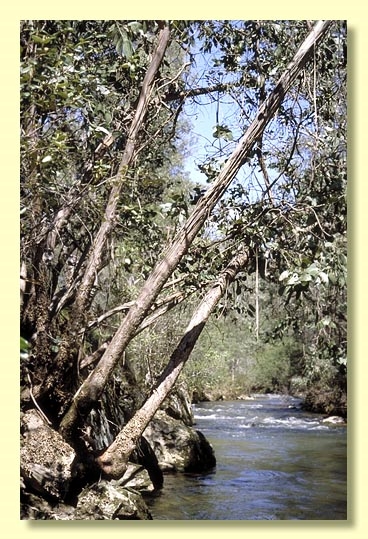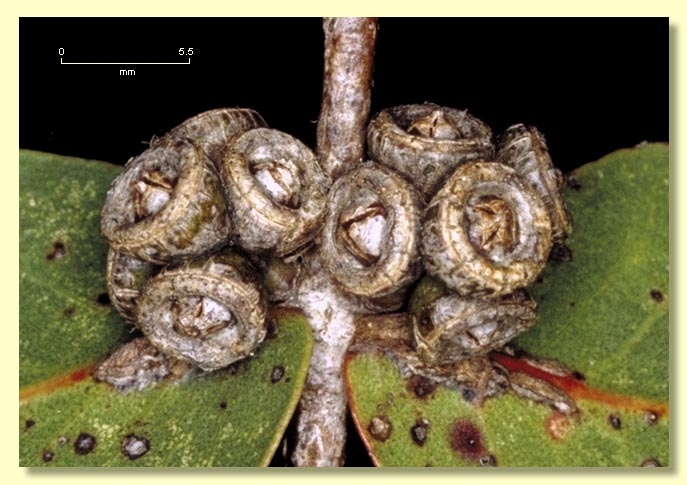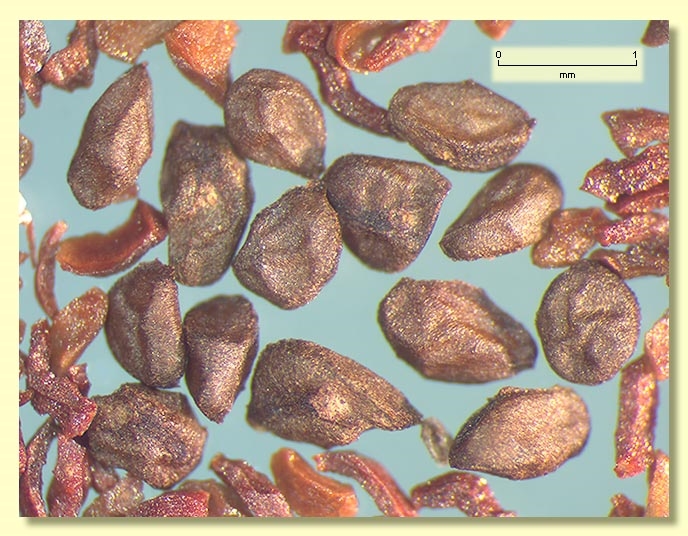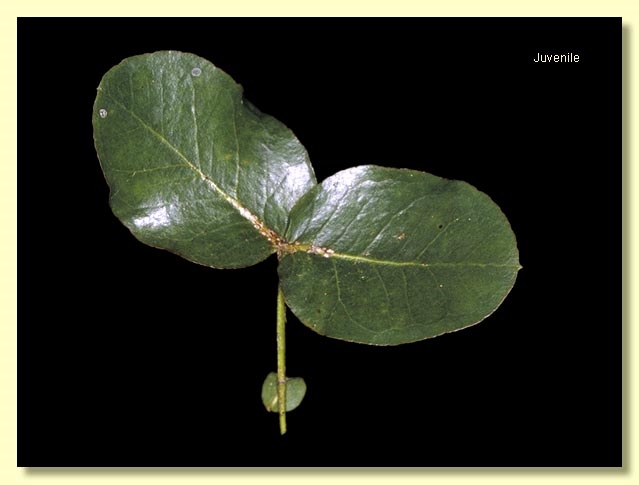Euclid - Online edition
Eucalyptus neglecta
Eucalyptus | Symphyomyrtus | Maidenaria | Euryotae | Neglectae
T: Upper Livingstone Ck, 20 miles [c. 32 km] upstream from Omeo, Vic., 1882, A.W.Howitt s.n.; iso: MEL.
Bark rough, fibrous, fissured longitudinally and grey to brown on trunk of larger plants, otherwise smooth, grey-green to yellow-brown, crown at times ribbony; branchlets glaucous or non-glaucous; new growth tips quite glaucous.
Juvenile growth (coppice or field seedlings to 50 cm): stem square in cross-section, glaucous or non-glaucous; juvenile leaves opposite, sessile, elliptical to ovate, 4.8–7.5 cm long, 4–5.2 cm wide, margin entire or crenulate, initially glaucous but soon weathering to green.
Crown of reproductively mature trees predominantly of juvenile leaves with some intermediate and adult lanceolate leaves. Crown leaves opposite, sub-opposite or alternate, petiole 0–2.3 cm long; blade lanceolate to ovate to elliptical to oblong, 7–18 cm long, 2.4–9 cm wide, flat or undulate, base amplexicaul to rounded or tapering, concolorous or discolorous, glossy, green to subglaucous, side-veins greater than 45° to midrib, densely to very densely reticulate, intramarginal vein well removed from margin, oil glands island and intersectional.
Inflorescence axillary unbranched, peduncles 0–0.5 cm long, buds 7 to15 per umbel, sessile. Mature buds ovoid, 0.3–0.6 cm long, 0.3–0.5 cm wide, green and red or glaucous, slightly angled longitudinally, scar present, operculum conical to rounded, stamens irregularly flexed or inflexed, anthers cuboid to oblong, versatile, dorsifixed, dehiscing by longitudinal slits (non-confluent), style long, stigma blunt, locules 3 or 4, the placentae each with 4 vertical ovule rows. Flowers white.
Fruit sessile, cup-shaped or obconical, 0.3–0.4 cm long, 0.4–0.7 cm wide, slightly angled longitudinally, glaucous or non-glaucous, disc usually raised-annular or level, valves 3 or 4, slightly exserted or near rim level.
Seeds brown or grey, 1–2 mm long, ovoid or flattened-ovoid, often pointed at one end, lacunose, dorsal surface pitted, hilum ventral.
Cultivated seedlings (measured at ca node 10): cotyledons bilobed to oblong; stems square, glaucous; leaves sessile and opposite throughout, ovate-lanceolate, 1–7 cm long, 0.5–4 cm wide, stem-clasping or the base truncate, margin entire or subcrenulate, apex rounded or emarginate, green to grey-green.
Flowering has been recorded in January, February, November and December.
A small tree endemic to Victoria, restricted to the area from Davies Plain south-west to Omeo, Dargo High Plains and upper reaches of the Jamieson River, on river flats in high country, but also at lower elevations on the Buckland River. Not closely related to any other species, it is distinguished by the glaucous young stems and crown of mixed, large, ovate to elliptical to oblong, grey-green juvenile leaves and lanceolate adult leaves. Buds and fruit are sessile, numerous and crowded, with the inner operculum of the bud usually non-glaucous and contrasting with the glaucous hypanthium.
Eucalyptus neglecta belongs in Eucalyptus subgenus Symphyomyrtus section Maidenaria, a large group of species more or less restricted to south-eastern Australia, characterised by bilobed cotyledons, simple axillary inflorescences, buds with two opercula, stamens with versatile anthers and flattened seeds with a ventral hilum. Within this section, E. neglecta stands alone in series Neglectae having the combination of characters outlined in the paragraph above.













